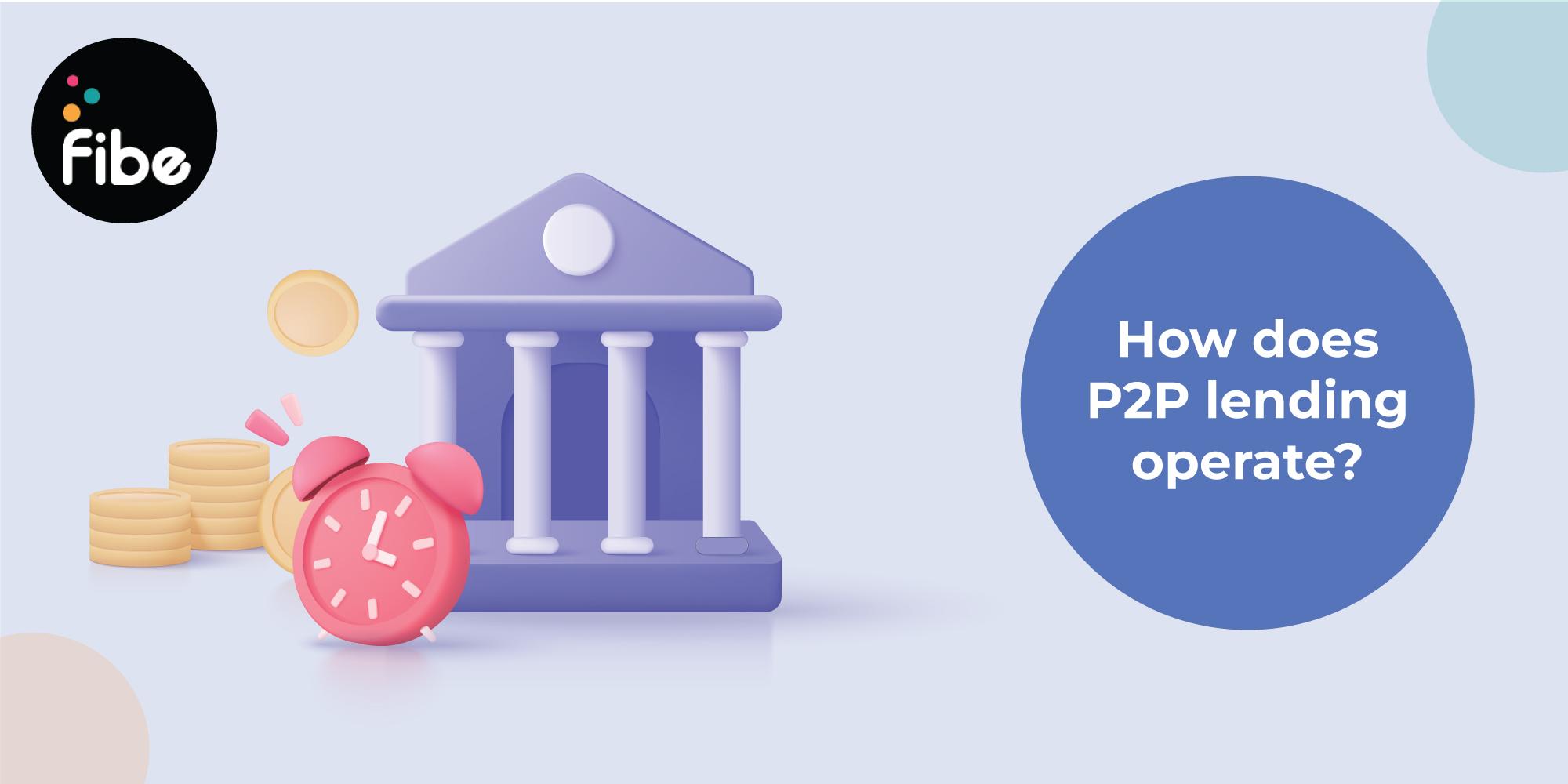Leveraging the limits of the traditional credit system, Peer2Peer lending has become popular across the country in recent times. It is a system where:
- People borrow within the communities to meet their financial requirements
- There is no involvement of an official financial institution
To know more about this new lending system, how it works, the risks involved and more, read on.
What is P2P Lending?
This is a credit system that connects potential lenders with people who require funds. Here are some key features of P2P lending:
- Borrowers pay interest on the loan amount, which helps lenders earn returns
- There is no financial institution involved as the transactions take place between two parties
- By looking beyond traditional sources, Peer-to-Peer credit systems have the potential to drive financial inclusion
- You can get funds for various purposes, including education, debt financing or working capital requirements
- It is an easy and convenient option as you can secure funds through an online P2P lending platform
How Peer-to-Peer Lending Works?
Here is how this credit system functions:
- It takes place through a website or online portal that directly connects borrowers with lenders
- Potential lenders and borrowers can create an account on this platform
- The platform reviews the borrower’s profile on various aspects, including their credit scores, repayment history, income, employment, social media activities and more
- Based on the assessment, the platform decides their creditworthiness and assigns risk buckets to them
- Lenders can check this assessment and choose to extend their loans
- The borrower pays interest on loans, which lenders earn as returns
- The interest is determined based on the risk bucket assigned to the borrower
- The Peer2Peer lending platform doesn’t levy a margin on the monthly instalments but charges a fee from both parties
Who Can Lend through Peer2Peer Lending?
Any individual with a valid PAN card can lend through a P2P credit platform. The following tax-paying entities can participate in Peer2Peer lending:
- Individuals
- Hindu Undivided Families (HUFs)
- Firms
- Societies
- Companies
Risks Involved in P2P Lending
While there are no market-linked risks involved in this credit system, there is a risk of default. This means that there is a possibility of the borrower not repaying the principal and interest. However, in such instances, lenders can issue a legal notice and the lending platform may assist with recovery.
You can mitigate the non-repayment risk by offering loans to borrowers in different risk buckets. You should also thoroughly assess the risk profile of the borrower before extending the loan.
Taxation on Peer-to-Peer Lending
Here’s what you need to know about the tax rules for interest earned in Peer2Peer Lending:
- The amount falls under the ‘Income from Other Sources’ category
- The amount is added to income and taxed as per the slab rate you fall under
Peer-to-peer lending loan is a great credit option to access funds quickly. However, you can also secure quick funding of up to ₹5 lakhs on Fibe. Our Instant Personal Loan has a simple application process and provides quick sanctions at affordable rates. We also have basic eligibility and documentation requirements and levy zero foreclosure charges. Download the Fibe Personal Loan App to get a loan in just a few clicks.
FAQs on How Peer-To-Peer (P2P) Lending Works
How does peer-to-peer lending work?
Here’s how this credit system works:
- It allows individuals and businesses to take loans directly from potential lenders
- No financial institution participates in the process as an intermediary
Is peer-to-peer lending legal in India?
Yes. As per the RBI guidelines, the following tax-paying entities can participate in this lending system:
- Individuals
- Hindu Undivided Families (HUFs)
- Firms
- Societies
- Companies
What are the advantages of P2P lending?
The following are some of the benefits of this lending system:
- It allows investors to access credit quickly and at lower rates than traditional sources
- Lenders can diversify their lending portfolio by providing loans to persons with different risk ratings
What is the limit of a Peer-to-Peer loan?
An individual can lend a maximum of ₹50 lacs across all Peer-to-Peer loan platforms. However, you can only extend a loan of up to ₹50,000 to a single borrower.
